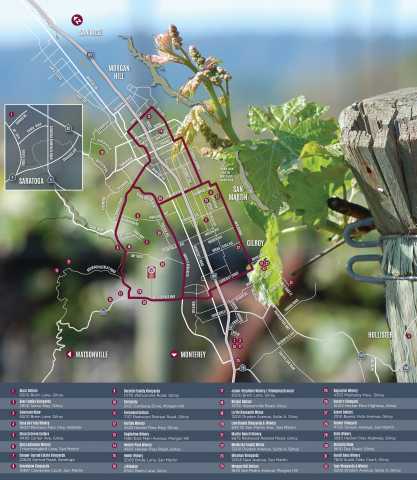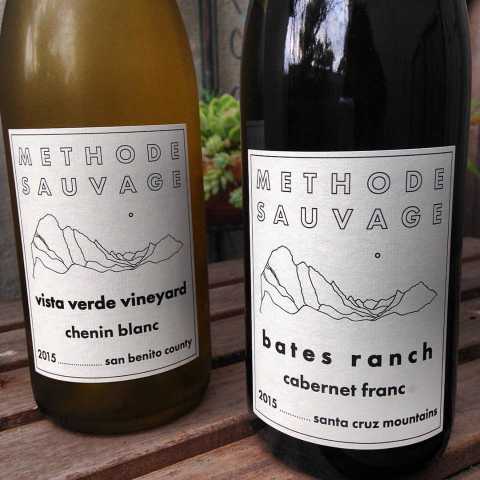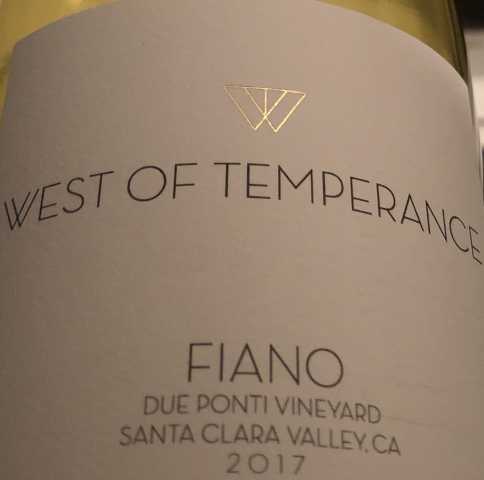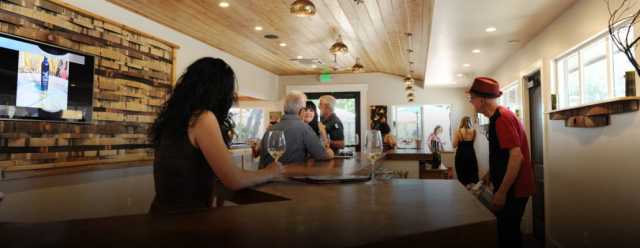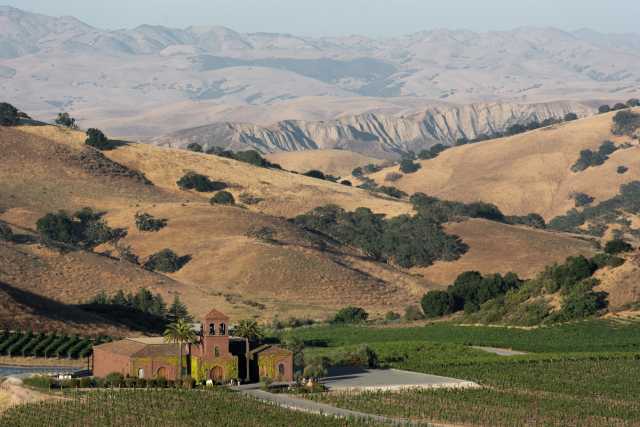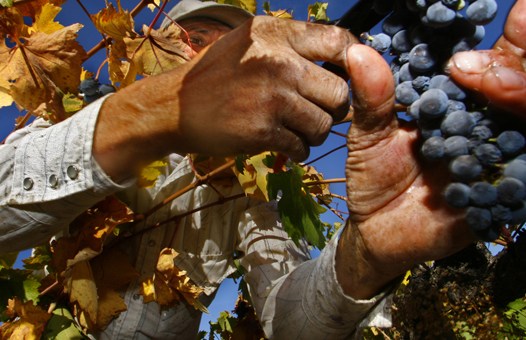I cannot speak for the issue of a variety bottled by a winery being of uncertain identity. However, I can offer the words of Mr Charles Sullivan on the “Montebello / Monte Bello Vineyard / Road / whatever” mess.
I realized early on that this thread occasionally would overlap into geographic regions peripheral to the Santa Clara Valley and San Benito County. My hope is that the focus will remain true to its purpose nevertheless.
Google Books
Like Modern Edens: Winegrowing in Santa Clara Valley and Santa Cruz Mountains, 1791-1981
by Charles L Sullivan
Published by California History Center, 1982
"Montebello Ridge:
"… The Villa Maria had begun planting vineyards at the bottom of the Ridge in the 1870’s. Their foreman had arrived here from Italy in 1872 and, encouraged by the father’s, Vincent Picchetti bought 160 acres above the Villa in 1877 and planted grape vines and fruit trees. In 1896 he built a fine little winery that still stands on the property, now part of a regional park.
"Picchetti was soon followed by other growers: Coreless, Roffo, Bellomi, Fisher, Zabeldano. More important, he was also followed by others interested in winemaking, but with a rather more idealistic attitude toward quality. To the top of the Ridge in 1886 came San Francisco physician Osea Perrone, who bought 180 acres there indirectly from Enrico Bressi, who had homesteaded the place the year before. Perrone established his Montebello Vineyards and built a great winery and summer home, as well as a fairly lucrative wine business.
"The greatest of the first generation Montebello winemakers was Pierre Klein, an Alsatian who came to California in 1875. Four years later he opened the Occidental Restaurant in San Francisco. Eventually in 1888 his skills and reputation placed the management of the restaurant and tasting room of the State Board of Viticultural Commissioners in his hands.
"… Also in 1888 Klein purchased 160 acres about halfway up Montebello Ridge and gradually developed one of the finest wine establishments in the state. He planted Mira Valle to the vines of Bordeaux’s Medoc: Cabernet Sauvignon, Merlot, Cabernet Franc, and Petite Verdot. He established his own brand, selling only in glass, and sold mostly to other good restaurants. His approach to viticulture and winemaking was impeccable.
“…In 1895 Klein was persuaded to enter his wine into the Bordeaux Exposition, where he took an honorable mention for an 1891 vintage in which he took little pride. The next year he won medals at Atlanta and Brussels. The success of his Mira Valle Cabernets reached its zenith in 1900 when he won the gold medal at the Paris Exposition. From then on his wine, and that of Emmett Rixford in Woodside, gave the ‘Chaine d’Or’ clarets of the Santa Cruz Mountains a reputation for excellence that carried through Prohibition and down to the present time. Klein continued his great work until 1910 when he retired, selling off his place in 1913. He settled in Mountain View where, in poor health and grieved by his wife’s death, he committed suicide in 1922. Pierre Klein’s name is much revered by the winemakers of the ‘Chaine d’Or’ today. (54-55)”
Although this passage may seem frivolous or off-the-mark, I only intended to point out that, regardless of trademarks or proprietary nomenclature, the history of the Montebello Ridge was beyond well-established prior to the creation of a well-known modern winery synonymous with Montebello Ridge.
I do not believe that any single business has the right to own the history of such an iconic geographic location. Nor am I claiming that this is necessarily what is being done.
Here’s a fairly new article highlighting the area’s continuing legacy for high-quality Bordeaux varieties:
SF Chronicle
“How Montebello Road Became California’s Greatest Cabernet Tour”
by Bryce Wiatrak
March 2, 2018
"It is ‘the most hallowed ground in California’, according to Ian Brand of I. Brand & Family Wines.
"Its terroir ‘is some of the most outstanding’ in the state, in the words of Duncan Arnot Meyers of Arnot-Roberts.
"Brand and Meyers are talking about vineyards on Montebello Road in Cupertino, where both winemakers buy Cabernet Sauvignon grapes. They both stumbled upon a rare opportunity — the fruit grown here is only scarcely available to outside producers, and it’s some of the most pedigreed in the United States.
"This small sector of vineyards, on a mountain overlooking Silicon Valley, is known widely for Ridge Vineyards’ iconic Monte Bello Vineyard. Ridge, according to the Oxford Companion to Wine, is ‘the most internationally admired producer of American Cabernet Sauvignon,’ an impressive epithet for a wine that lacks the marketing advantages of a recognizable region — say, Napa Valley — on the label. Instead, Monte Bello and its neighbors lie in the vast Santa Cruz Mountains AVA, a sparsely planted appellation spanning three counties (San Mateo, Santa Clara and Santa Cruz) from Half Moon Bay to Watsonville.
"Ridge’s name has become synonymous with this corner of the Santa Cruz Mountains, maybe even the entire AVA. Ridge even has the name ‘Monte Bello’ trademarked. But what most wine drinkers don’t know is that Ridge is not the only property producing beautiful wines on Montebello Road. In fact, the viticultural traditions of this rugged mountainside extend nearly 150 years into the past, and the narratives of the Montebello Road neighbors — names like Picchetti, Fellom, Naumann and Vidovich — are deeply intertwined with Ridge’s.
"What makes the land on Montebello Road so attractive for wine growing? Its climate is cooler than Napa’s, which enables the area to produce Cabernet Sauvignons of greater elegance and structure. Meyers, who grew up in Napa, says he turned to the Santa Cruz Mountains after he ‘realized that some of our favorite Cabernet wines were coming from cooler places.’
“‘You’re battling nature all the time,’ says Roy Fellom, who cultivates a 10-acre vineyard adjacent to Ridge. Eighty mile-per-hour winds blowing from the Pacific, coupled with a large diurnal temperature swing, cause vines to struggle.”

"…Vineyards on Montebello Road grow atop the North American plate, although the San Andreas Fault line appears visibly within reach. Longtime Ridge winemaker Paul Draper explains that amid the tectonic activity seawater mixed with gasses from the earth’s core to form limestone, the most coveted soil type for wine. ‘With limestone, mountain fruit is more elegant and precise,’ explains Brand.
Yet because Ridge holds the trademark for the Monte Bello name, many wines made in this exceptional terroir do not identify the place on their label. (Wineries can legally use the phrase as part of a geographical indication: Fellom Ranch’s Cabernet names ‘Montebello Ridge’, while I. Brand and Vidovich Vineyards call theirs ‘Monte Bello Road’.)
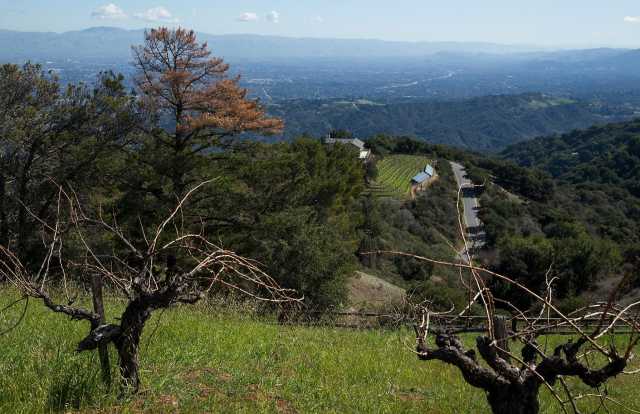
"…For a time, Ridge was the only operating winery on Montebello Road. It got some company in 1980, when Roy Fellom planted Bordeaux varieties on his family estate, which looks onto Perrone. ‘When we started,’ Fellom explains, "it was Picchetti, me, and Ridge.’
"The Picchetti property was growing grapes then, but its wine label would not be revived until 1998, when Leslie Pantling signed a long-term lease with the Open Space District to take control of the vineyards and old winery. (Before her, Sunrise Winery had leased the land.) Since then, the winery count on Montebello Road has doubled, as the small growers Naumann, Vidovich, and R & W have all launched their own labels.
"With six producers in place, and high-profile clients like I. Brand and Arnot-Roberts purchasing fruit from several of them, will these Montebello Road wineries surrounding Ridge continue to grow in quality and recognition, and will others join them?
"The greatest challenge: ‘There isn’t a lot of room for other people up there,’ says Brand…
“…That limited supply of grapes means that these wineries primarily vinify in small lots. For them, wholesale distribution is not viable, and several, such as Picchetti, have come to rely on direct-to-consumer sales. While such a business structure can increase a winery’s profit margin per bottle, it can also inhibit more widespread brand recognition — and regional recognition. In other words, these hidden gems may well stay hidden.”
